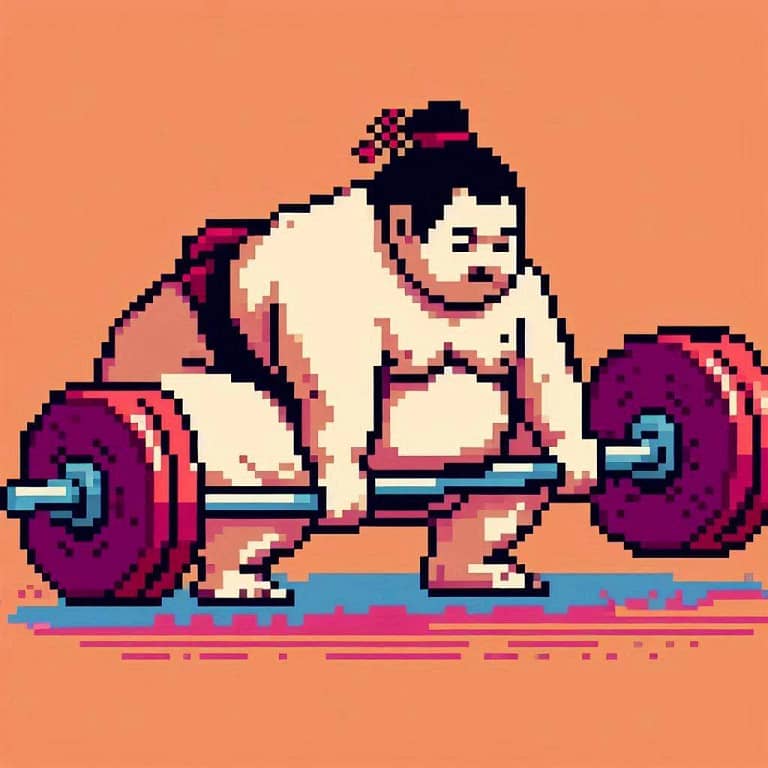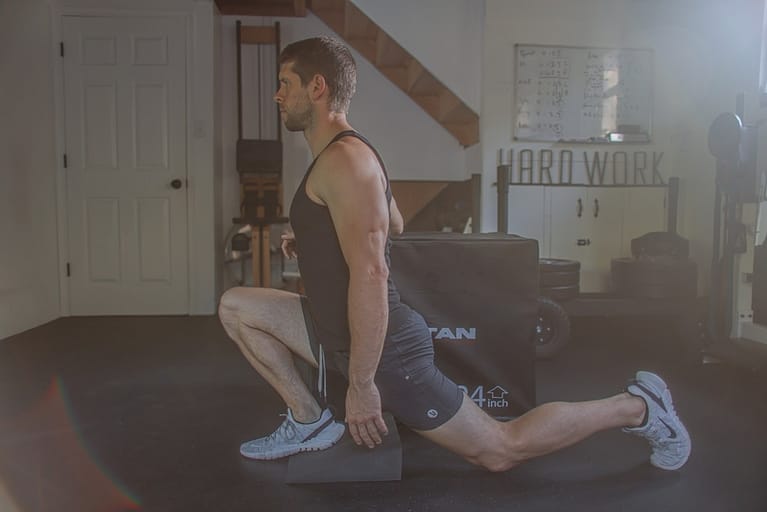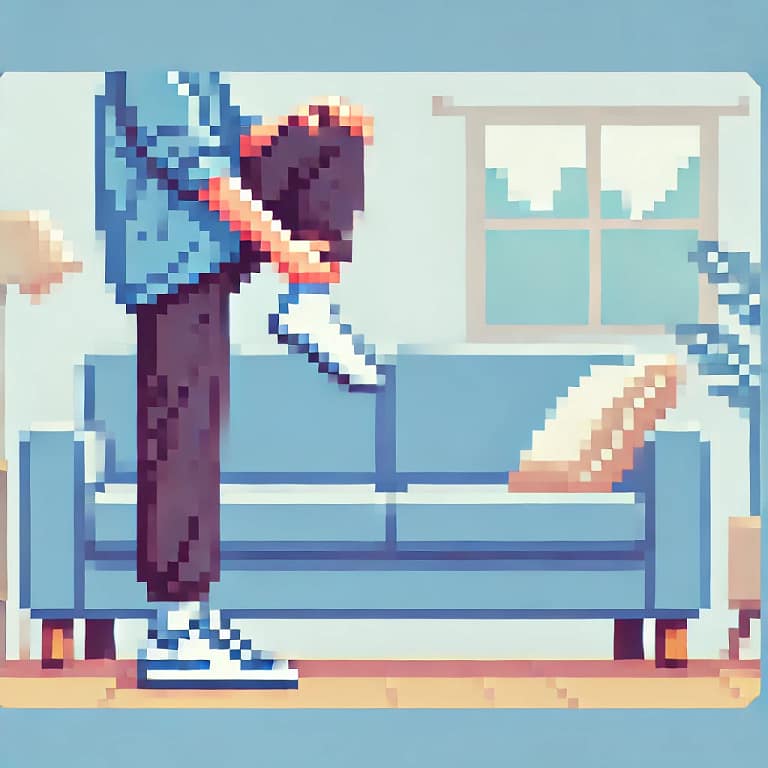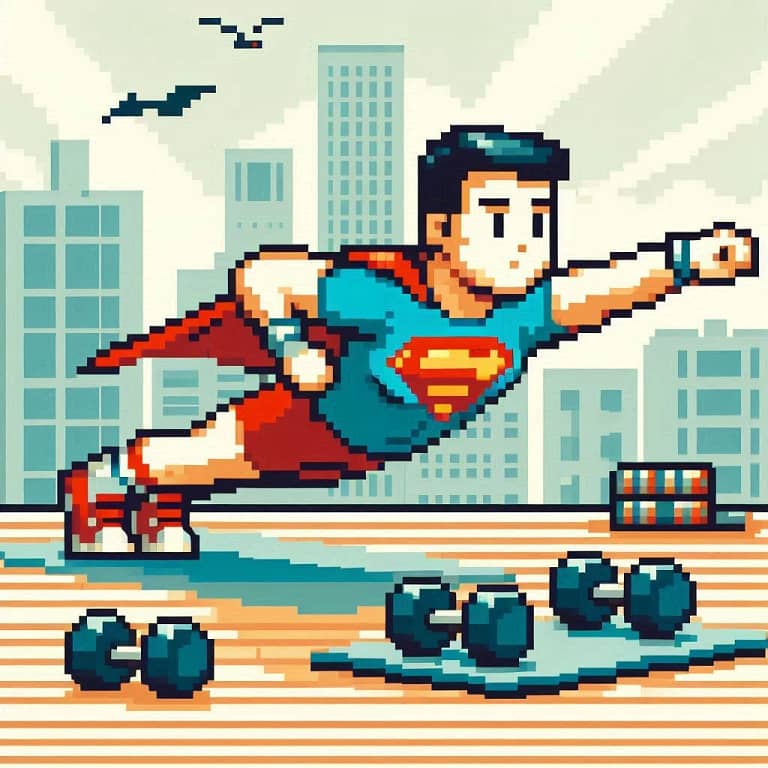Thrust your Way to a Bigger Butt
Get a Glute Shelf with the Barbell Hip Thrust
The barbell hip thrust is one of the most effective exercises for targeting the glutes for muscle hypertrophy. It has gained significant popularity recently in the fitness world, particularly among those who are trying to build juicy butts.
The exercise involves placing a weighted barbell across your lap while your upper back rests on a bench, and then, you thrust like hell. Until your glutes burn.
Studies consistently show that the barbell hip thrust elicits gluteal muscle response more than other glute exercises. This is most likely because during the barbell hip thrust, the glutes are in an ideal position to generate force, and the barbell is a means to progressively overload the glutes.
Below I’ll discuss the proper setup and materials needed to perform the barbell hip thrust as well as how best to utilize the movement to increase glute size effectively.
The Barbell Hip Thrust
Objective:
- Glute Muscle Stimulus
- Attain a “Glute Shelf”
Materials:
- Bench/Couch/Chair – to support your upper back
- Booty Band – to further isolate the glutes
- Barbell – to add resistance
- Weights – necessary for progressive overload
- Barbell Pad – For comfort when lifting heavy weight
Steps:
- Set Up
- Start Position
- Tip the “Soup Bowl”
- Execution
- Squeeze the Glutes
- Start Position
- Progressive Overload
- Add Resistance
- Mind Muscle Connection
- Add Booty Band
Sets and Reps:
- 3-4 Sets (10-25 Repetitions)
How to Perform the Barbell Hip Thrust
- The Set Up
- Begin by sitting in front of a bench around 12-18 inches in height with a barbell resting on the floor in front of your thighs. Your knees should be bent and your feet should be shoulder width apart with feet pointing forward and possibly a little turned out. Your upper back should be resting against the bench. The barbell should be positioned against your hips.
- Roll the barbell over your legs and position it so that it sits at your hip crease. You should use a barbell pad to cushion your hips.
- Bend your knees and position your feet flat on the ground at shoulder width apart. You can slightly turn your feet outward to your liking. Your feet should be placed slightly forward but not too far out in front of your body.
- Starting Position
- Place your hands on the barbell at shoulder width apart with an overhand grip to help stabilize it.
- Lean back on the bench, ensuring that your back is supported by the bench and your head is in a neutral position.
- Execution
- Engage your core and glutes as you push your hips upward towards the ceiling.
- Focus on squeezing your glutes rather than using your lower back to extend your hips. Think of your pelvis as a “soup bowl” that you are going to tip the contents of onto your stomach. This is called posterior pelvic tilt.
- At the top, your body should form a straight line from your knees to your shoulders. Pause at the top for a brief second, squeezing your glutes before slowly returning to the bottom position under control. Stop with your butt about an inch from the floor to keep your glutes under constant tension.
- Repeat for the desired number of repetitions with eccentric control on each and every repetition.
- Engage your core and glutes as you push your hips upward towards the ceiling.
Progressive Overload
One of the reasons the barbell hip thrust is so effective for building glute size, is because the glutes are in a very strong position, allowing you to use adequate load for muscle strength and hypertrophy.
Gradually increase the load on the bar over time. This is essential for continued muscle growth. Make sure you have a pad to slip over the bar for comfort.
The goal is not to keep putting more and more weight on the bar, but to increase the amount of weight you can handle while keeping tension on the glutes primarily, especially if your goal is glute size or a glute “shelf”. If you only focus on increasing the weight, you can be sure that other muscles will try to help which will take focus off your glutes.
Try to isolate your glutes by pouring your “soup bowl” onto your stomach. Also be sure to hold the top of each repetition for a brief second and really squeeze your glutes before lowering with control. These are great cues for maintaining the mind to muscle connection with your glutes. More on this is a moment.
Also, If you don’t have a barbell, you can use a dumbbell in your lap instead. The setup is similar and you may use a towel if necessary for comfort.
Muscle Connection
One of the most important aspects of glute building is making a mind to muscle connection. In other words, you want to think about the muscle you are working and make sure that it is “on tension” throughout the entire set. This may require you to take each repetition slowly and possibly decrease the weight for a while to ensure that the glutes are primarily working.
During hip extension, squeeze your butt hard and lower the barbell slowly with control, trying to let the glutes lengthen under the tension. No matter what, keep squeezing your glutes. You should be winded by the end of the set.
You can adjust your foot placement and turn out to wherever you “feel” your glutes the most. A slight outward turn of the feet or adjustment of the angle can place more emphasis on the glutes.
Sometimes I hear my clients say that their inner thighs and hamstrings get too involved with the hip thrust. You can shut them off by utilizing a booty band to further enhance the activation of the abductor muscles. When the abductors are contracting, the adductors or inner thigh muscles quiet down and wait their turn.
A booty band will limit the amount of weight you can use because your inner thighs are normally involved with hip extension. Without their help, the hip thrust will be more challenging!
The booty band is not necessary but it will help you isolate your glutes and stop you from forcing your lower back and inner thighs to try and help. Remember, we want as much tension as possible on the glutes.
Sets and Reps
If your aim is muscular hypertrophy and glute growth, your best bet is to keep your rep range to 10-20 for 3-4 sets.
If you perform your hip thrust with control, 20 repetitions should take around 60 seconds to complete. And if you keep the mind muscle connection with your glutes the entire time, that will be one long minute.
It is also important to vary your rep ranges so that you can take advantage of heavier loads during some sets and lighter weights for more repetitions during other sets.
Many of my clients tell me that as soon as the weight exceeds a certain point (usually more than body weight) they start to feel other muscles kick in. I generally make them keep their hip thrusts lighter so that they can target the glutes only. You don’t have to do this but many of them don’t want to lose their “thigh gap” and sometimes if the hip thrust is too heavy, the inner thighs will get bigger from muscular hypertrophy. Remember, you can combat this by using a booty band around your legs.
Final Word
The barbell hip thrust can be a great tool for sculpting and building the glute shelf. By using correct form, focusing on mind muscle connection and with consistency, you can build a great butt that protects your lower back.
Of course, the barbell hip thrust is not the only movement you should be doing for glute hypertrophy. You should be utilizing other glute exercises, like squats, Romanian deadlifts and Bulgarian split squats.
But the hip thrust is a great way to progressively overload the glutes and improve their ability to generate tension in hip extension. Start building your glute shelf today!





